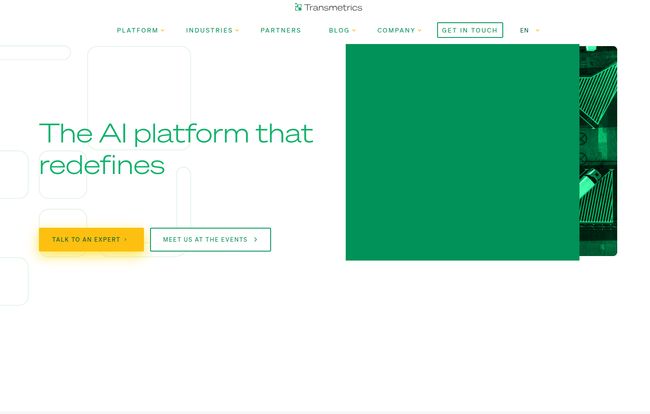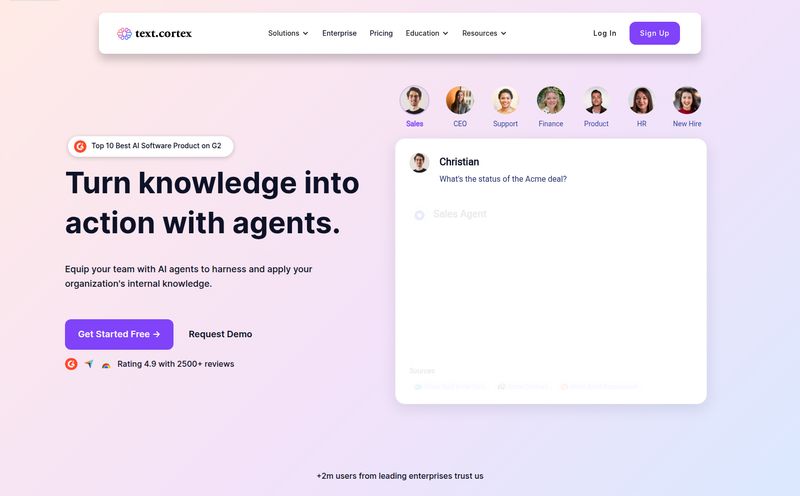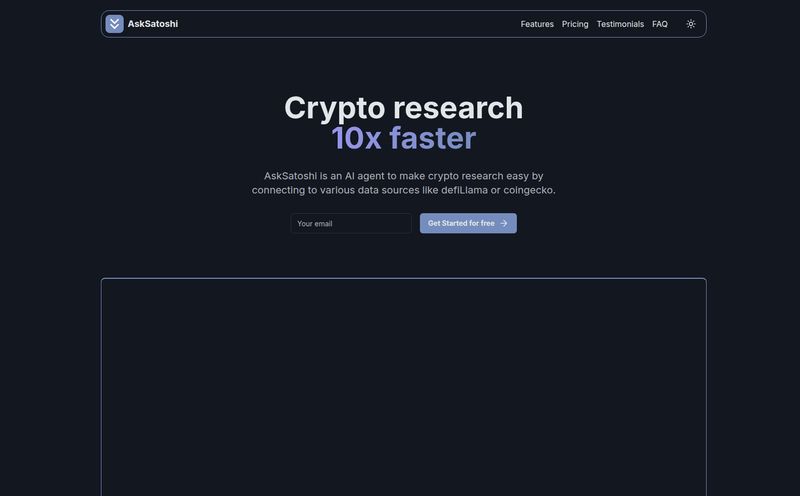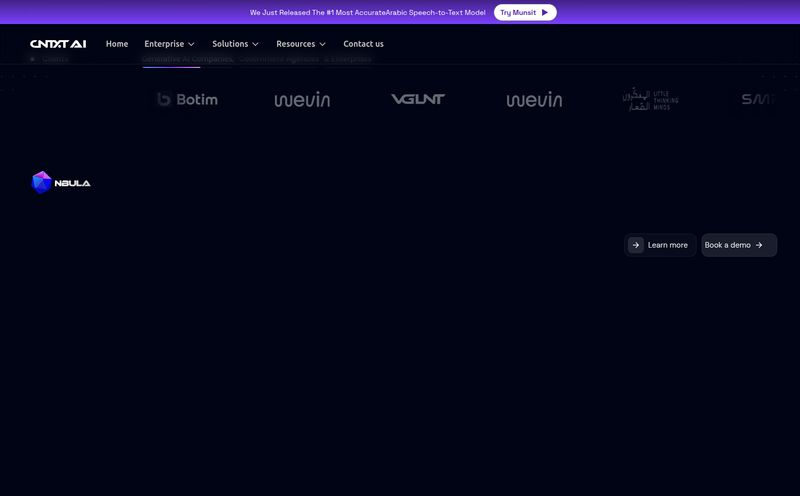For years, a huge chunk of the logistics world has been run on a wing, a prayer, and a labyrinth of Excel spreadsheets that would make a CPA weep. We've made decisions based on last year's numbers, gut feelings, and the particular blend of coffee in the dispatcher's mug that morning. And hey, for a long time, that kind of worked. But the margins are getting thinner, the customers are getting needier, and the fuel costs... well, let's not even go there.
So when a company like Transmetrics comes along, flashing terms like “AI-powered platform” and “logistics optimization,” my inner SEO and tech nerd sits up and pays attention. But my inner skeptic, the one who's seen a million “game-changing” SaaS platforms come and go, raises an eyebrow. Is this the real deal, or just another fancy dashboard with a hefty price tag? I decided to pop the hood and take a look.
So, What Exactly Is Transmetrics?
In the simplest terms, Transmetrics aims to be the central nervous system for a logistics company. It’s not trying to be a new Transportation Management System (TMS) or ERP; instead, it’s designed to plug into the systems you already have. Its job is to ingest all that messy, chaotic data from your operations—your shipping schedules, truck locations, customer orders, maintenance logs—and make sense of it. All of it.
And here’s the part that really caught my eye: it cleanses and enriches that data. Anyone who’s ever tried to pull a report from three different systems knows the pain of mismatched formats, missing fields, and flat-out wrong information. It's the classic 'garbage in, garbage out' problem. Transmetrics promises to fix the 'garbage in' part first, which, in my experience, is more than half the battle. After cleaning it all up, it applies its AI models to do something genuinely useful with it: predict the future.

Visit Transmetrics
Okay, not with a crystal ball. But with predictive analytics that can forecast demand, anticipate bottlenecks, and suggest optimizations you probably wouldn’t see on your own. It's like having a team of data scientists and veteran logistics planners on call 24/7.
Breaking Down the AI Toolkit
It's an all-in-one platform, but what are the actual tools in the box? It seems to focus on a few key areas where logistics companies bleed money and efficiency.
Predictive Forecasting That Might Actually Work
Forecasting in logistics has always felt a bit like meteorology; you make your best guess based on past patterns and hope you're not completely wrong. Transmetrics uses AI to analyze historical data alongside current market signals to create much more accurate supply and demand forecasts. This isn’t just about knowing how many widgets you’ll need to ship next quarter. It's about knowing how many trucks you'll need in a specific lane, what your staffing should look like during peak season, and where you can pre-position assets to meet an anticipated surge. Less guesswork, more profit.
The Tricky Puzzle of Logistics Optimization
This is the operational core. We're talking about linehaul planning—figuring out the absolute best way to get freight from Point A to Point B, day in and day out. The platform crunches the numbers on routes, capacity, transit times, and costs to help build more efficient and resilient networks. It can help you consolidate shipments, reduce empty miles, and build schedules that are both cost-effective and reliable. This is where those bottom-line savings they talk about really come from.
Finally, a Solution for the Empty Container Headache
If you're not in logistics, this might sound trivial. If you are, you just winced. The cost of repositioning empty containers and trailers is a massive, infuriating drain on resources. You're literally paying to ship air. It’s one of the industry's oldest and most expensive problems. Transmetrics dedicates a whole feature set to this, using its forecasting abilities to predict where you'll have a surplus of empty containers and where you'll have a deficit. By matching those up, it helps companies drastically cut down on the costs of moving empty boxes across the country. This alone could be a huge selling point for large-scale operators.
More Than Just Routes: Predictive Fleet Maintenance
Downtime is a killer. A truck in the shop isn't making money. Transmetrics extends its predictive magic to fleet maintenance, analyzing vehicle data to forecast potential failures before they happen. Think of it as your truck telling you its alternator is feeling a bit weak, giving you time to schedule a repair during planned downtime instead of having it die on the side of a highway in the middle of nowhere. Proactive maintenance keeps the fleet rolling and service levels high.
The Good, The Bad, and The Enterprise-Level Complicated
No tool is perfect, and it's important to go in with eyes wide open. On the plus side, the platform’s focus on integrating with and cleaning up existing data sources is a massive pro. The fact that they have a proven record with some top-tier logistics names (which you can see on their site) adds a lot of credibility. It’s not just a startup with a good idea.
But there are some hurdles to consider. This isn’t a plug-and-play app you download from an app store. It requires deep integration with your existing TMS, ERP, and asset management systems. That takes time, resources, and a dedicated IT effort. It’s a serious project, not a weekend install.
There's also likely a learning curve. A tool this powerful has a lot of levers and buttons, and getting your team fully up to speed to extract maximum value will take some training and commitment. It’s a new way of thinking, shifting from reactive to predictive.
And now for the question on everyone’s mind: what’s the price? Well, you won't find a pricing page on their website. You have to “Talk to an Expert.” As a consumer, I always find this a little frustrating. But as a B2B professional, I get it. This isn't a one-size-fits-all product. The cost will depend heavily on the size of your operation, the complexity of the integration, and the specific modules you need. It’s a signal that they’re selling customized, enterprise-level solutions, not off-the-shelf software.
Who Is This Actually For?
Let's be clear: this probably isn't for the small owner-operator with three trucks. The investment in time and money just wouldn't make sense. Transmetrics is squarely aimed at mid-to-large-scale logistics providers, freight forwarders, and trucking companies. The kind of operations where a 2% improvement in fuel efficiency or a 5% reduction in empty miles translates into millions of dollars in savings annually. It's for the COO who is tired of seeing red on the balance sheet from operational waste, or the Head of Planning who knows there’s a better way but doesn't have the tools to find it.
My Final Take
So, is Transmetrics the AI messiah for the logistics industry? Probably not a messiah, but it's a seriously powerful tool that addresses some of the most fundamental and costly challenges in the business. It represents the direction the entire industry is heading: away from intuition-based decisions and toward data-driven, predictive operations.
The upfront commitment is significant, no doubt about it. But for the right kind of company—one that has complex operations and is ready to embrace a data-first culture—the ROI potential is enormous. It's about turning the chaotic noise of daily operations into a clear, profitable signal. And in today's world, that’s a pretty powerful advantage.
Frequently Asked Questions
What does Transmetrics actually do?
Transmetrics is an AI software platform that connects to a logistics company's existing systems (like their TMS and ERP). It cleans their operational data and then uses AI to provide highly accurate forecasting and optimization for things like shipping demand, route planning, empty container repositioning, and fleet maintenance.
Is Transmetrics a Transportation Management System (TMS)?
No. It's designed to work with your current TMS. A TMS is great for execution—managing orders, dispatching, and tracking. Transmetrics is a layer of intelligence on top of that, helping you make smarter, more predictive plans and decisions before you even execute them in your TMS.
How much does Transmetrics cost?
The pricing isn't publicly listed. This is typical for enterprise-level software because the cost is customized based on the company's size, the specific features needed, and the complexity of the integration. You need to contact their team for a custom quote.
What is the main benefit of using an AI platform like Transmetrics?
The main benefit is shifting from being reactive to being proactive. Instead of just reacting to problems as they happen (like a truck breaking down or a sudden spike in demand), you can anticipate them. This leads to higher efficiency, lower operational costs, and better service levels for your customers.
Is it difficult to set up?
It requires a dedicated implementation project. The platform needs to be integrated with your existing data sources, so it does require involvement from your IT department or an implementation partner. It's not a simple 'sign up and go' tool, but a strategic platform integration.
Who is the ideal customer for Transmetrics?
The ideal customer is a medium to large logistics or trucking company with complex operations and a significant amount of data. Companies that struggle with high costs from empty miles, unpredictable demand, or inefficient fleet utilization are the ones who will see the most benefit.
Reference and Sources
- Transmetrics Official Website
- Gartner on AI in Supply Chain
- Supply Chain Dive on the Empty Container Problem



